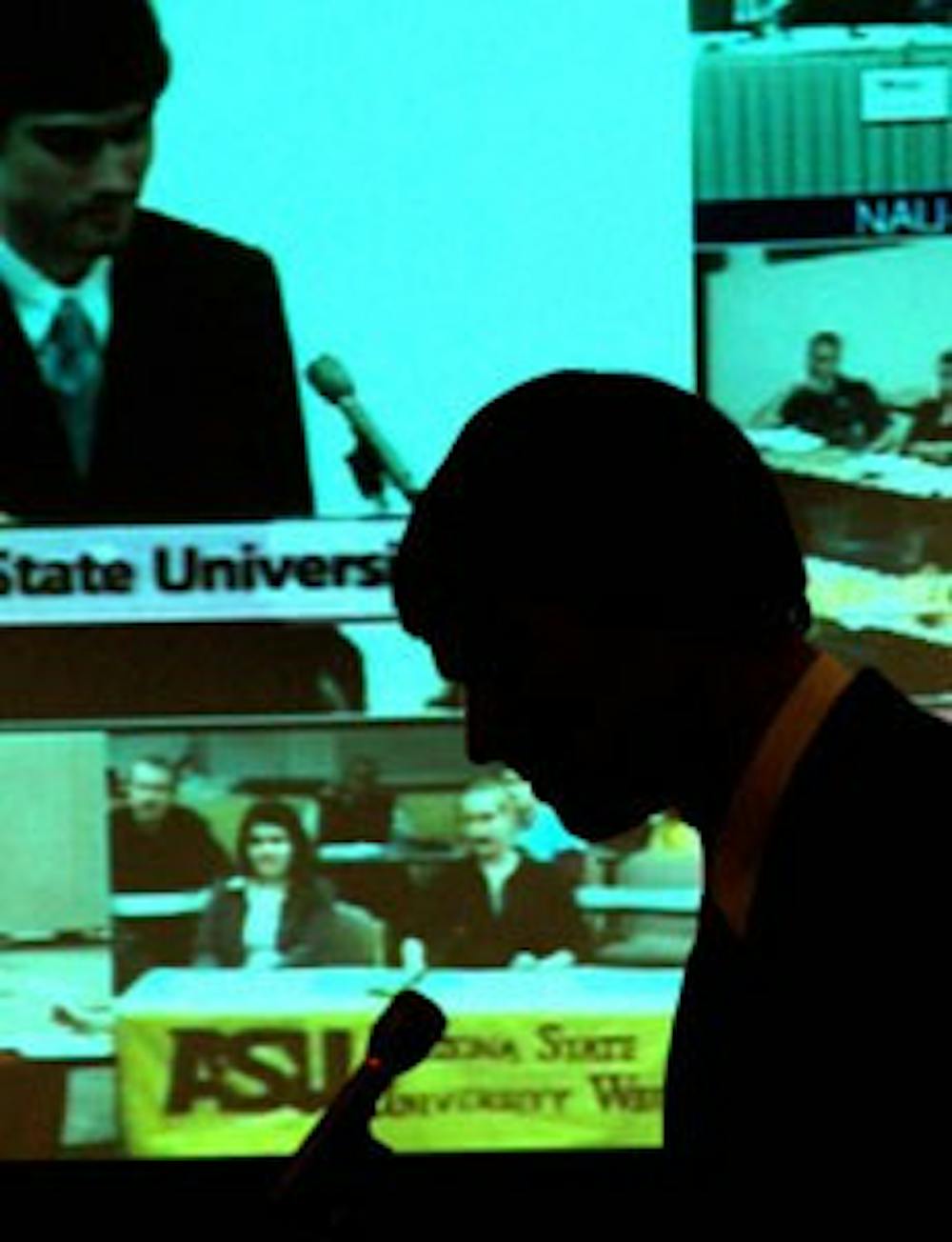Students voiced their opinions on tuition increases Monday during an Arizona Board of Regents videoconference between Arizona's three public universities.
Undergraduate Student Government President Ross Meyer proposed an Arizona Students' Association plan to increase resident tuition by 2.3 percent, contingent on the Arizona Legislature's increasing funding to the universities by 12 percent, or $150 million.
ASA, a student advocacy group for higher education, is recommending 2.3 percent for the public universities in Arizona because it is the rate at which Arizona median family income increased over the last fiscal year, Meyer said.
"Our plan allows the state Legislature the opportunity to fund higher education, which they've repeatedly asked for," Meyer said. "They don't want to see tuition go up."
ASA's plan would increase nonresident tuition 7 percent, which Meyer called "incredibly low" compared to past figures.
In spring 2005, the regents voted for an 8.5 percent increase for nonresidents for the 2005-06 school year.
Polytechnic campus student government President Daniel Nilan and West campus student government President Jessi Pederson also said they support the ASA proposal.
ASU President Michael Crow, who participated in the conference from the West campus, presented a 7 percent undergraduate tuition increase and an 8.5 percent graduate tuition increase. The increases would be for both resident and nonresident students.
Crow also proposed two mandatory fees for students - extending the Student Recreation Complex fee to the students at the Polytechnic and West campuses, and adding a $100 technology fee for all students.
"These resources are essential for student success and access," Crow said.
Because the USG Senate did not have sufficient information on the technology fee, senators voted last week to unanimously oppose it, said Senate President Chris Gustafson.
The Senate, however, unanimously approved the ASA tuition proposal, Gustafson added.
"It gives students and their parents the chance to keep their pocketbooks intact while still providing resources for the expanding University," he said.
If state funding does not increase 12 percent, ASA will change their proposal to match Crow's 7 percent and 8.5 percent increase for undergraduate and graduate students, respectively.
A 12 percent increase in funding would be the largest in Arizona Legislature history, but when compared to last year's 11.4 percent, it is realistic, Meyer said.
At least the University would have explored another route before increasing tuition, said Devin Mauney, USG government relations director.
"The worst case outcome is a 7 percent increase," Mauney said of undergraduate tuition. "Seven percent is the only possible outcome if the president's proposal is accepted."
Meyer said he is confident the ASA proposal will be accepted.
"We've actually had some regents come out and say they're going to support a student proposal," he said. "That's the first year we've had that happen."
A high student turnout at the hearing is an indication of student support for the ASA proposal, said Rita Rabbani, a marketing sophomore.
"I hope the regents take the student support into consideration," Rabbani said. "The ASA proposal is a more fair representation of the student body and what they're in favor of."
Students also spoke on individual college fees, such as a $30 increase for some classes in the Herberger College of Fine Arts next semester and a $250 fee for freshmen entering the Walter Cronkite School of Journalism and Mass Communication.
ABOR plans to vote on the tuition proposals at a Nov. 30 meeting.
Reach the reporter at: meghan.keck@asu.edu.




